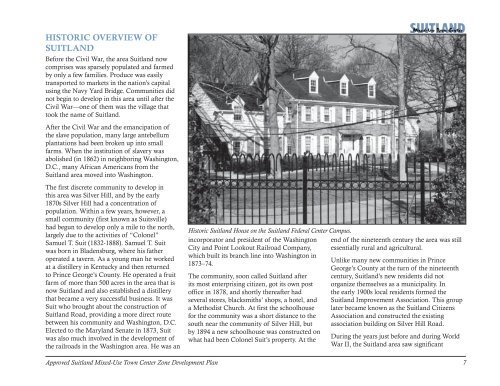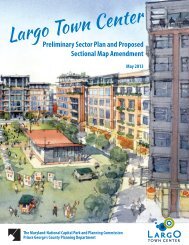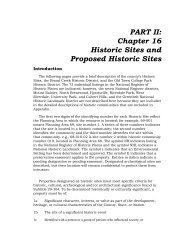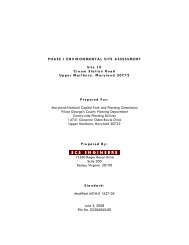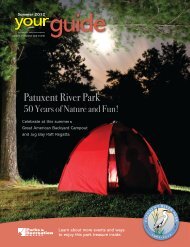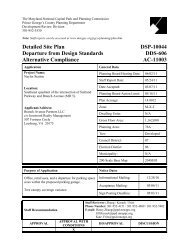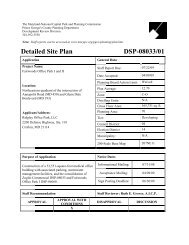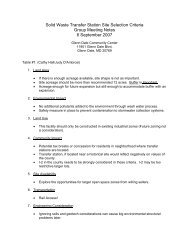SUITLAND - Prince George's County Planning Department
SUITLAND - Prince George's County Planning Department
SUITLAND - Prince George's County Planning Department
Create successful ePaper yourself
Turn your PDF publications into a flip-book with our unique Google optimized e-Paper software.
HISTORIC OVERVIEW OF<strong>SUITLAND</strong>Before the Civil War, the area Suitland nowcomprises was sparsely populated and farmedby only a few families. Produce was easilytransported to markets in the nation’s capitalusing the Navy Yard Bridge. Communities didnot begin to develop in this area until after theCivil War—one of them was the village thattook the name of Suitland.After the Civil War and the emancipation ofthe slave population, many large antebellumplantations had been broken up into smallfarms. When the institution of slavery wasabolished (in 1862) in neighboring Washington,D.C., many African Americans from theSuitland area moved into Washington.The first discrete community to develop inthis area was Silver Hill, and by the early1870s Silver Hill had a concentration ofpopulation. Within a few years, however, asmall community (first known as Suitsville)had begun to develop only a mile to the north,largely due to the activities of “Colonel”Samuel T. Suit (1832-1888). Samuel T. Suitwas born in Bladensburg, where his fatheroperated a tavern. As a young man he workedat a distillery in Kentucky and then returnedto <strong>Prince</strong> George’s <strong>County</strong>. He operated a fruitfarm of more than 500 acres in the area that isnow Suitland and also established a distillerythat became a very successful business. It wasSuit who brought about the construction ofSuitland Road, providing a more direct routebetween his community and Washington, D.C.Elected to the Maryland Senate in 1873, Suitwas also much involved in the development ofthe railroads in the Washington area. He was anHistoric Suitland House on the Suitland Federal Center Campus.incorporator and president of the WashingtonCity and Point Lookout Railroad Company,which built its branch line into Washington in1873–74.The community, soon called Suitland afterits most enterprising citizen, got its own postoffice in 1878, and shortly thereafter hadseveral stores, blacksmiths’ shops, a hotel, anda Methodist Church. At first the schoolhousefor the community was a short distance to thesouth near the community of Silver Hill, butby 1894 a new schoolhouse was constructed onwhat had been Colonel Suit’s property. At theend of the nineteenth century the area was stillessentially rural and agricultural.Unlike many new communities in <strong>Prince</strong>George’s <strong>County</strong> at the turn of the nineteenthcentury, Suitland’s new residents did notorganize themselves as a municipality. Inthe early 1900s local residents formed theSuitland Improvement Association. This grouplater became known as the Suitland CitizensAssociation and constructed the existingassociation building on Silver Hill Road.During the years just before and during WorldWar II, the Suitland area saw significantApproved Suitland Mixed-Use Town Center Zone Development Plan


